Does Matcha green tea have Caffeine?
If you’re wondering about the caffeine in matcha green tea, let’s just say there’s a lot to learn. Drinking matcha is an excellent choice if you’re sensitive to caffeine but still need a morning pick-me-up. Matcha has the highest level of caffeine compared to other green teas - but it’s not that simple.
Several factors, from quality to harvesting methods, play a part in matcha caffeine content. Whether you're an avid drinker or trying matcha out for the first time, understanding how much caffeine is in matcha green tea is essential to how you can enjoy it.
Key Takeaways
- Yes — matcha contains caffeine, and often more than other types of green tea. A standard 2-gram serving of high-quality matcha contains around 68mg of caffeine, which can rival or exceed a typical cup of coffee, depending on how it's prepared.
-
Matcha is one of the highest-caffeine green teas because it’s made from powdered whole leaves, meaning you consume all the caffeine.
Here’s a quick comparison:-
Matcha: ~68mg per 2g serving
-
Gyokuro: 120–140mg per brewed serving (but caffeine is extracted, not consumed fully)
-
Sencha: ~50–60mg per serving
-
Hojicha: Low caffeine (due to mature leaves and stems)
-
-
Matcha’s caffeine is released more slowly due to the presence of L-theanine, an amino acid that promotes calm and focus. This combination creates a smoother, more sustained energy boost without the crash or jitters often experienced with coffee.
What Determines Matcha Green Tea Caffeine Content
All styles of green teas contain caffeine, a stimulant that's a member of the methylxanthine group and is the same molecule that is present in coffee. However, levels differ widely based on how tea leaves are processed. Tea plants produce caffeine as a chemical defense mechanism to protect themselves from insects. Humans have had quite the opposite response and consume tea for its taste, caffeine content, and health benefits.
Determining how much caffeine is in matcha and other green teas boils down to multiple factors such as:
- The tea plant itself: Although Camellia sinensis is one species, there are numerous varieties and cultivars. Each individual plant will have varying levels of caffeine. Additionally, individual parts of the plant will have varied levels. For example, the newly flushed bud and leaves are the most tender, nutrient dense part of the plant and therefore attracts predators. So, the plant may send more caffeine to those vulnerable areas, versus its stem, for example (which is why Kukicha tea is a great option for those looking for less caffeine!).
- Tea Quality: Tea quality plays a huge part in caffeine in matcha and other teas. High-quality green tea generally comes from younger tea leaves. The younger the leaves are at harvest, the higher the caffeine level can be.
- Style of Tea: Different tea styles contain different levels of caffeine. For example, the caffeine in matcha and gyokuro can be higher than in other styles of green teas. Hojicha, which is comprised of larger, more mature leaves and stems will also contain less caffeine due to the parts of the plant used.
- Shading: Some Japanese teas are shaded prior to harvest to increase sweetness and umami for a particular style. Usually, as the leaves become bigger, they contain less caffeine. The shading process reduces the speed of loss of caffeine.
- Picking: Matcha caffeine content also depends on the parts of the plant used and the age of the leaves when picked. Teas like matcha, made from spring harvests versus later subsequent harvests, have significantly more caffeine.
- Processing Method: When certain teas are processed, the stems are removed. Teas with fewer stems contain more caffeine.
- Serving Size: How much matcha powder or loose tea leaves you use in your serving will affect caffeine levels.
- Brewing Temperature and Time: Brewing tea at higher temperatures can extract a higher caffeine level. Also, the longer you brew loose leaf teas, the more caffeine is extracted from the leaves into your cup.
- Way of Consumption: Consuming hot tea or cold tea, as well as tea with water or milk, affects caffeine levels.
With all these factors involved, it’s clear how the caffeine in matcha and other green teas can widely vary. Not to mention, all teas aren’t created equally. Therefore, our discussion of how much caffeine is in matcha and other green teas will focus on high-quality teas like those offered by Mizuba Tea Co.
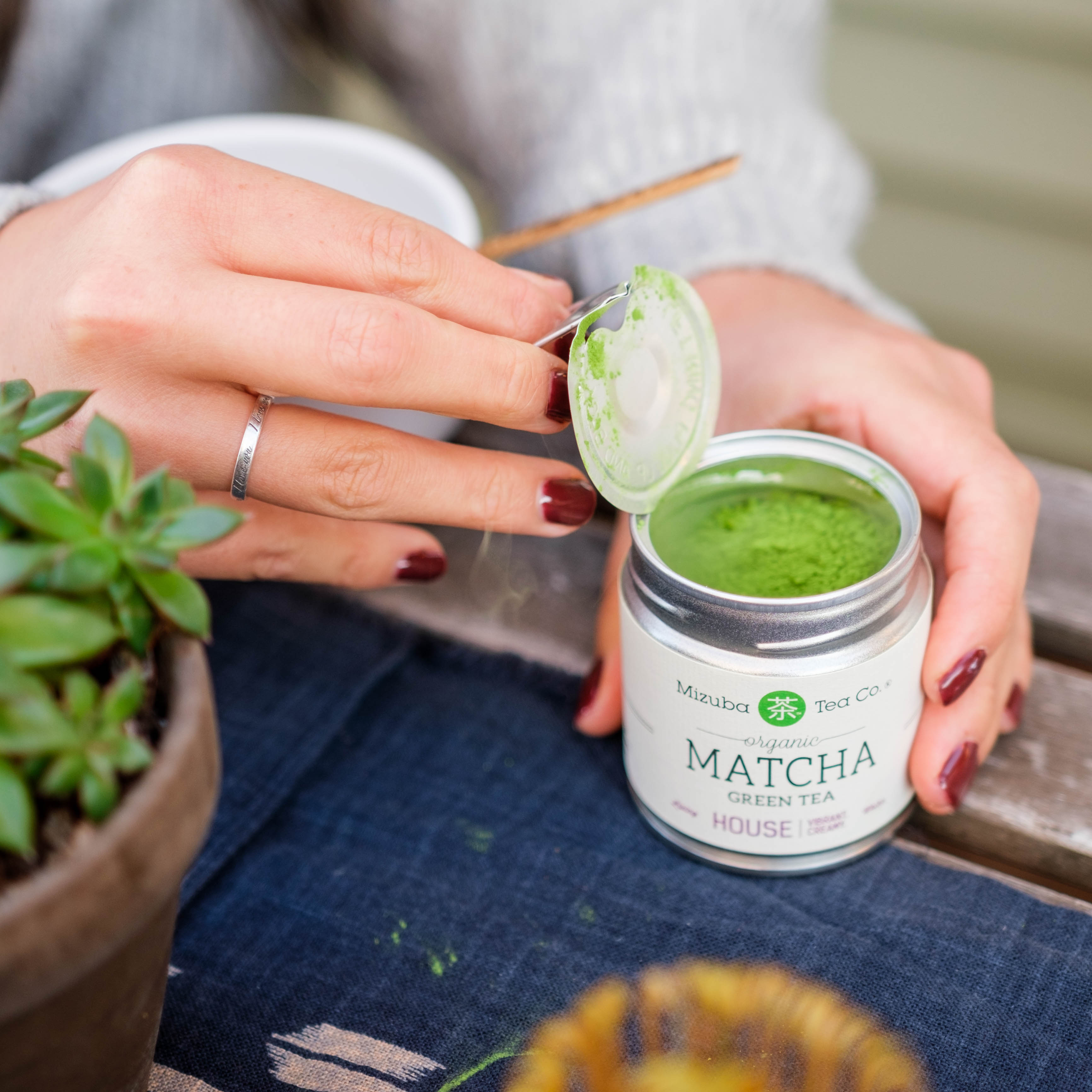
Caffeine in Matcha Green Tea
So, does Match have Caffeine? The answer is, YES! Studies have found that matcha can contain between 19 and 44 milligrams of caffeine. Most high-quality matcha contains about 34 milligrams of caffeine per gram of matcha powder. In traditional consumption, a typical serving of matcha is about 2 grams of powder to 100 milliliters (about 3.5 ounces) of water. That would be about 68 milligrams of caffeine in a recommended serving. Matcha is regarded as a high-caffeine green tea because you can increase the level of caffeine in your serving simply by adding more powder.
Matcha could potentially contain more caffeine than coffee, depending on how it's prepared. For example, if you were to make an 8-ounce cup of matcha, it could contain more caffeine than a drip coffee of the same size. Don’t be alarmed, though! Caffeine in matcha is released and absorbed in a completely different way from coffee. More on that – read on!
Comparison: Caffeine in Matcha vs. Other Green Teas
The difference between the level of caffeine in matcha and other green teas is how the tea is consumed. With matcha, all the caffeine is consumed at once since the whole tea leaf is ground into a powder.
Green teas extracted from loose tea leaves must be steeped several times to extract all of the caffeine. With loose-leaf teas, you also steep the leaves and then remove them, only consuming the infused water. A typical serving of loose-leaf green tea is 5 grams of tea leaves to 150-180 milliliters (about 5 to 6 ounces) of water.
The caffeine in matcha may be the highest of all green teas, but other green teas like gyokuro aren’t too far behind. Similar to matcha, gyokuro is shaded for about 21 days before harvesting. The caffeine level in gyokuro is a bit lower than in matcha because the leaves are steeped, and then removed after being infused into water. However, a recommended serving of gyokuro contains about 120 to 140 milligrams of caffeine which is higher than a recommended serving of matcha.
On the other hand, sencha, one of the most consumed green teas, contains about 50 to 60 milligrams of caffeine in each serving. Most senchas are unshaded, hence their lower caffeine content.
However, the style of tea kabuse sencha (kabusecha) is an exception. Kabusecha is shaded for less time than gyokuro and matcha and contains about 60 to 70 milligrams of caffeine per serving. Of course – everyone’s caffeine sensitivities are different, so you may find you are more affected by certain styles of teas than others!
What Makes Caffeine in Matcha and Japanese Green Teas Different
As mentioned earlier, caffeine in matcha is unique in how it is released and absorbed after consumption. Matcha contains highly concentrated amounts of antioxidants and amino acids. Caffeine in matcha is released at the same time as the amino acid, L-theanine, which suppresses and antagonizes the stimulant effect of caffeine. Our systems first separate theanine molecules from caffeine molecules in order to process them, which causes their effects to be more gradual.
Some describe the synergy between caffeine and L-theanine as a calm, alert feeling that lasts throughout the day without the dreaded crash. L-theanine also reduces anxiety, stress, and insomnia while creating a sustained energy boost.

Quality is Key
No matter what caffeine level you’re looking for, quality is an overarching factor in the level of caffeine in matcha and other green teas. Choosing high-quality teas elevates your experience while indulging in all the benefits of tea drinking.
At Mizuba Tea Co., our teas are sourced with the highest level of tradition and care. You’ll be able to taste and feel the difference with each #MatchaMoment. Join us for your next tea time!
Our staff’s current favorite picks, for pick-me-ups:
- Lauren: I can’t get enough of this special organic Koshun Oolong!
- Dan: At the end of a full day drinking lots of tea, I like to wind down with the organic Chamomile Hojicha (it’s naturally lower in caffeine!)
- Heather: I keep reaching for Kokoro – it’s incredibly smooth!
- Grahm: Organic Culinary for me! Drinking iced vanilla matcha lattes on a daily basis.
- Kaleena: I’m staying calm and cool with iced houjicha lattes on repeat.
- Denise: I love a classic Daily Mizuba matcha latte, sweetened with honey and topped with foamy milk & a dash of cinnamon! Gets me a kick start to the day.
Sources
(Health Benefits and Chemical Composition of Matcha Green Tea: A Review, 2021)
Kochman J, Jakubczyk K, Antoniewicz J, Mruk H, Janda K. Health Benefits and Chemical Composition of Matcha Green Tea: A Review. Molecules. 2021; 26(1):85. https://doi.org/10.3390/molecules26010085
Mohanpuria P, Kumar V, Yadav S.K. Tea caffeine: Metabolism, Functions, and Reduction Strategies. Food Sci. Biotechnol. 2010; 19(2): 275-287. DOI 10.1007/s10068-010-0041-y


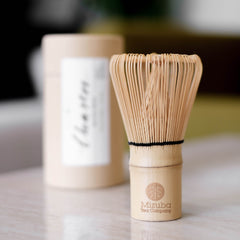
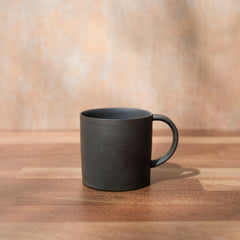
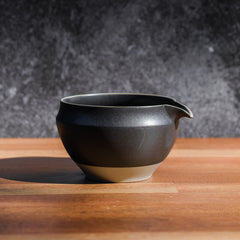
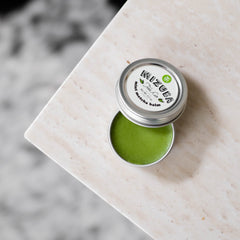
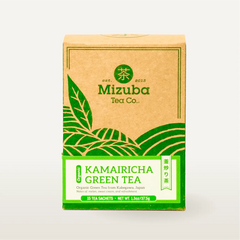
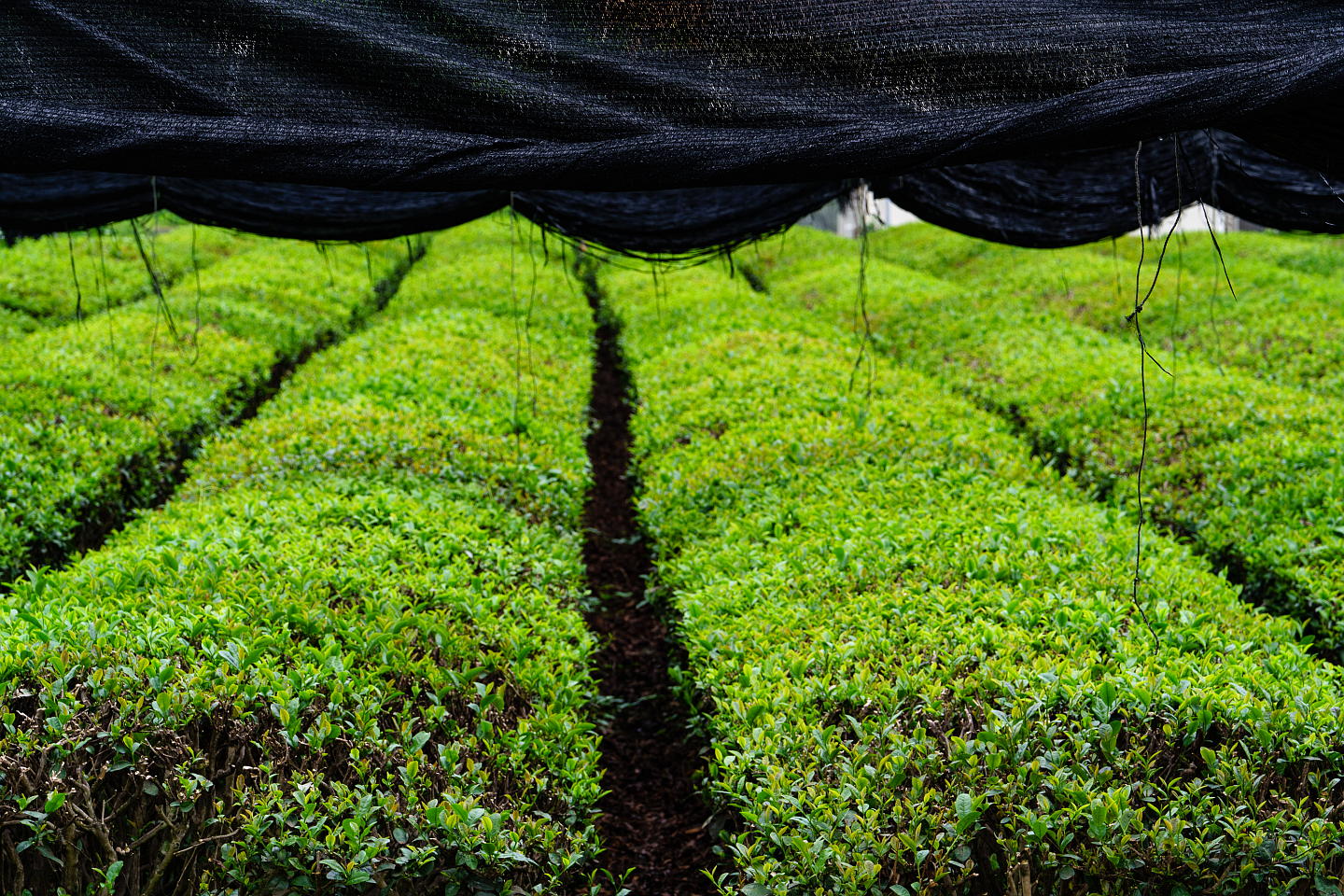
Leave a comment